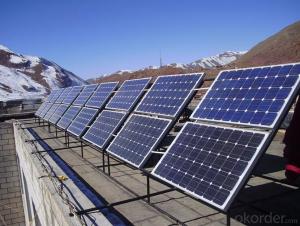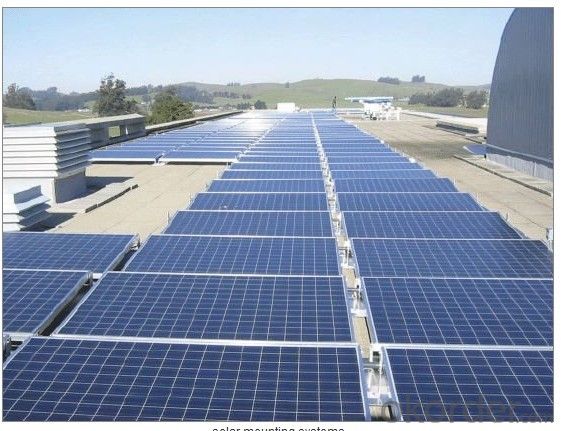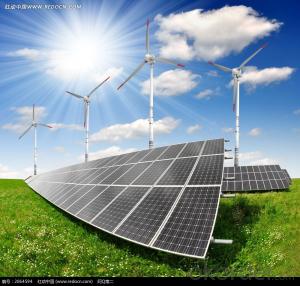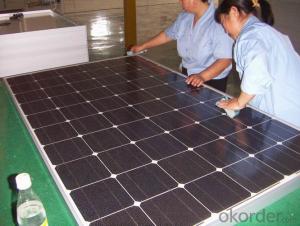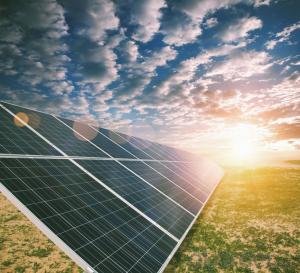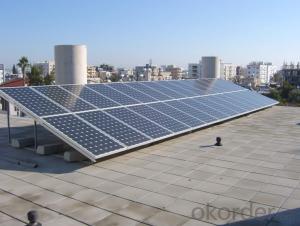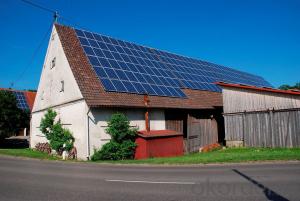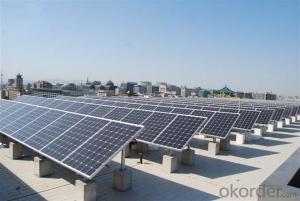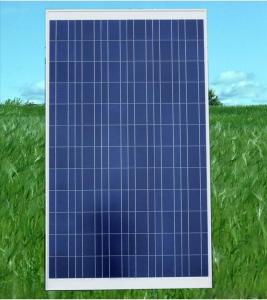Solar Panels San Luis Obispo - Polycrystalline Silicon Solar Panels 315w
- Loading Port:
- Nanjing
- Payment Terms:
- TT OR LC
- Min Order Qty:
- 200000 watt
- Supply Capability:
- 20000000 watt/month
OKorder Service Pledge
OKorder Financial Service
You Might Also Like
INTRODUCTION
This installation Manual contains essential information for the electrical and mechanical installation that your must know before installing CUSTOMER PV modules. This also contains safety information you need to be familiar with .All the information described in this manual are the intellectual property of CNBM and based on the technologies and experiences that have been acquired and accumulated in the long history of CUSTOMER. This document does not constitute a warranty, expressed or implied.
CUSTOMER does not assume responsibility and expressly disclaims liability for loss, damage, or expense arising out of in anyway connected with installation, operation, use or maintenance of the PV modules. No responsibility is assumed by CUSTOMER for any infringement of patents or other rights of third parties that may result from use of PV module.
CUSTOMER reserves the right to make changes to the product, specifications or installation manual without prior notice.
WORK PRINCIPLE
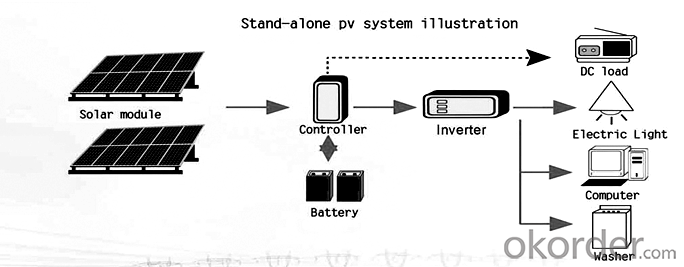
Process is as follows:
1, the battery test
2, positive Welding - Inspection –
3, on the back of cascading - Inspection –
4, laying (glass cleaning, material cutting, glass pre-processing, laying) –
5, laminating –
6, to flash ( to the side, cleaning) –
7, fitted border (glue, loading angle keys, punching, install box, scrub I glue) –
8, the welding junction box –
9, high-pressure test –
10, component testing -- -
11 appearance inspection, packaging and storage;
COMPONENTS
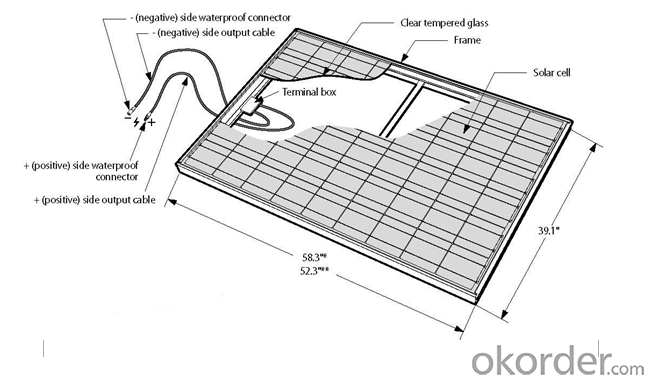
Data sheet
Maximum power | 315W |
Cell type(mm) | Polycrystalline solar cell 156*156 |
Number of cell(pcs) | 72(6*12) |
Manufacture site | China |
Open-circuit voltage(voc) | 45.1V |
Maximum power voltage(vmp) | 37.3V |
Short-circuit current(isc) | 8.88A |
Optimum operating current(imp) | 8.45A |
Power tolerance | 0~+5W |
Module efficiency | 16.2% |
Dimensions(mm) | 1956*992*40 |
Weight | 27 kg |
Backsheet | Silver |
Frame Colar | White |
Frame | Anodized Aluminum Alloy |
- Q: During the summer my house uses about .47 kw/h I am wondering what solar panel do I need to cover most or all the electric bill. A link would be helpful too :)
- Your okorder /.. A solar panel of 40-50 square meters should suffice, at least in summer when the sun is high in the sky. It's about 500 square feet, or about 20 times 25 feet.
- Q: Can solar panels be used in hot climates?
- Yes, solar panels can be used in hot climates. In fact, solar panels actually perform better in higher temperatures as they rely on sunlight rather than heat to generate electricity. However, excessive heat may slightly reduce the efficiency of the panels, but modern solar technology is designed to handle and adapt to varying weather conditions, including hot climates.
- Q: Solar panels are costly.Do you know any inexpensive way?So that i can make one of my own.
- Solar things are always costly... You can use concave mirrors and concentrate the heat and heat what and then steam ll be formed and then steam directed to turbines, there you go generating electricity with out solar panels...
- Q: i have a 2v 2a solar panel that i want to use to charge a 2v battery .Have found out that i need a charge controller so i don't over charge the battery.I have found a cheep one its 2v but 7a will it still work ?All-so im planing on running a 2v water pump off the battery with a timer,its for watering my garden.Will the timer have to be 2v as well ?any help on this would be greatly appreciated thanks .
- The charger will accept whatever current is necessary from the solar panel up to 7A. It's not like the solar panel will force 2amps into the charger/battery -- the charger will control the current going to the battery. I question whether or not the 2V panel will actually charge the battery, though, because in order to charge a standard lead-acid 2V battery you need to have about 4.5 volts applied to the terminals. Perhaps the charger has a boost circuit -- I don't know without looking at it or knowing the brand/model number, etc. The timer must be 2VDC, but, if you only have a timer that is rated for 20VAC, you can buy a small inverter that will take 2V and supply the necessary 20VAC. An inverter rated for 20 to 50 Watts should be sufficient. These usually cost under US$25. .
- Q: Can solar panels be installed on forests or protected areas?
- Solar panels can be installed in forests or protected areas, but it should be done with careful consideration and planning to minimize the potential negative impacts on the ecosystem.
- Q: Can solar panels be installed on research facilities or laboratories?
- Yes, solar panels can be installed on research facilities or laboratories. In fact, many research facilities and laboratories have started to adopt solar energy to reduce their carbon footprint and dependence on traditional energy sources. Solar panels can be installed on rooftops or open spaces adjacent to the facility, providing clean and sustainable energy to power various equipment and operations. Additionally, the installation of solar panels on research facilities can serve as a demonstration of renewable energy technologies and encourage further adoption within the scientific community.
- Q: Can solar panels be installed on a military base?
- Yes, solar panels can be installed on a military base. In fact, many military bases around the world have already implemented solar energy systems as part of their efforts to reduce dependence on fossil fuels and increase sustainability. Solar panels can be installed on rooftops, parking lots, or open grounds of military bases to generate clean renewable energy.
- Q: Can solar panels be installed on a theater or entertainment venue?
- Yes, solar panels can be installed on a theater or entertainment venue. In fact, many theaters and entertainment venues have started adopting solar energy solutions to reduce their carbon footprint and save on energy costs. The large roof spaces found on these buildings often provide ample space for solar panel installations, allowing them to generate clean electricity and contribute to a greener and more sustainable future.
- Q: a fiber optic network could distribute solar energy from warm states to the rest of the country. Using a Federally created program,the energy would be used through a trust program to benefit all of our citizens equally. It would create thousands of jobs and help us with our dependence on foriegn oil supplies. This is no different than work programs created by the Feds during the 930's depression era.
- Claire's argument doesn't make much sense to me either. First; Claire is talking about the second law ('you can only lose or break even'), not the third law ('you can't get to absolute zero'). Easily confused, but not that important! Putting a solar panel down _can_ increase the heat absorbed by Earth. Everything has an 'albedo' (the proportion of incoming light it reflects), and Earth's average albedo is about 0.3 (ie 30% of incoming light is reflected, most of which leaves the atmosphere straight away). By putting a 0.05 albedo solar panel down on a 0.3 albedo surface, you increase the amount of sunlight that is absorbed by Earth and therefore contribute to warming. This heat is re-radiated at the Earth's temperature, in the right wavelength range to be absorbed by greenhouse gases too. If you put a panel down on equatorial ocean, or a black roof, however, there is pretty much no effect (since the albedo change is small). Also, the heating effect only lasts as long as the panel is there. Most panels are estimated to last 50 years, meanwhile CO2 has a mean lifetime of 00+ years. I did some maths and found that the 00 year averaged change in radiative forcing for solar panels was negative compared to the UK electric grid, because the reduction in CO2 emissions has a larger effect than the change in albedo. If I have spare time tomorrow I'll redo the calculations and share them. The albedo change has to be considered though!
Send your message to us
Solar Panels San Luis Obispo - Polycrystalline Silicon Solar Panels 315w
- Loading Port:
- Nanjing
- Payment Terms:
- TT OR LC
- Min Order Qty:
- 200000 watt
- Supply Capability:
- 20000000 watt/month
OKorder Service Pledge
OKorder Financial Service
Similar products
Hot products
Hot Searches
Related keywords

